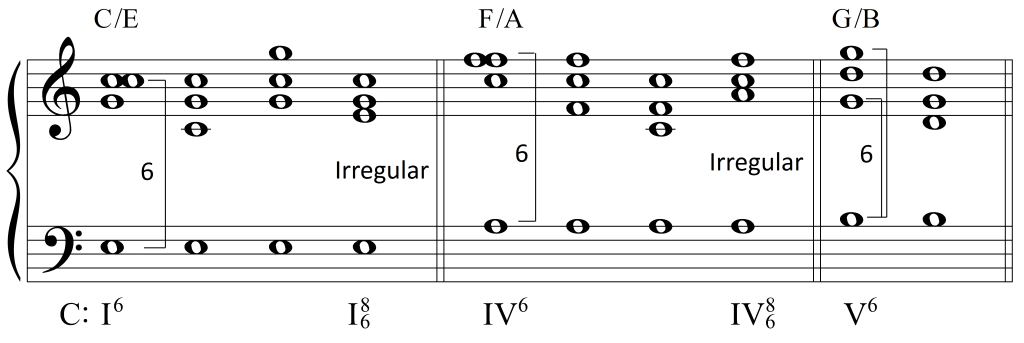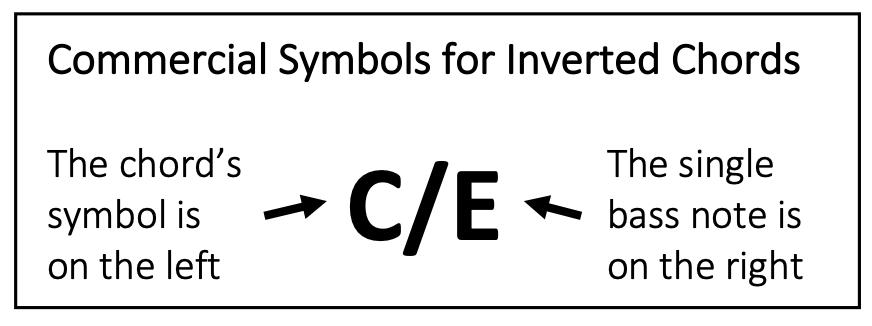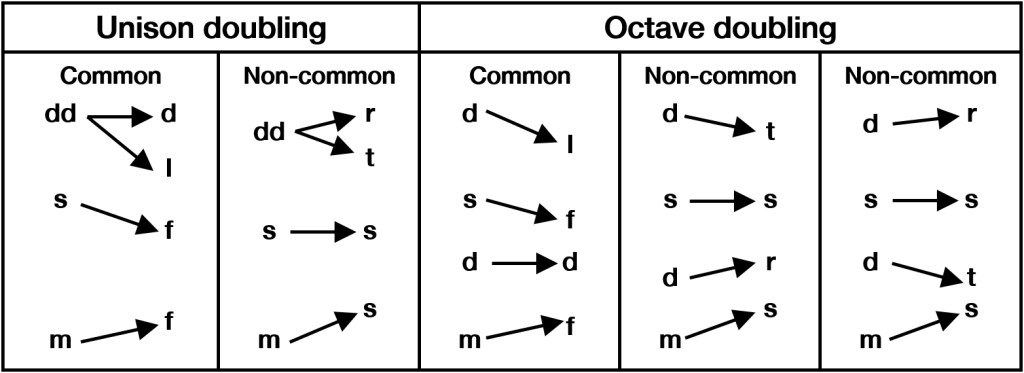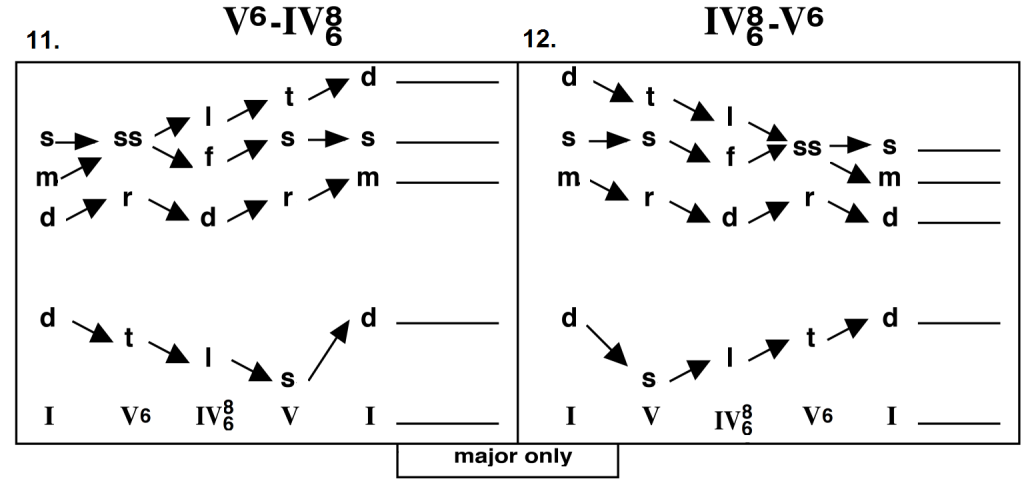6 Primary Triads in First Inversion
The “6” in the figured bass and Roman numeral analysis indicates the interval between the bass note and the root of the chord in an upper voice. The ” ![]() ” indicates an irregularly doubled 3rd.
” indicates an irregularly doubled 3rd.
For a review of chord inversions, see the Review: Chord Inversions and Figured Bass.
DoublinG
The root or the 5th is doubled, often in the soprano at the unison or the octave. (See Voice Leading examples 1-10.)
Occasionally the 3rd is doubled irregularly in the I ![]() and IV
and IV![]() chords. (See Voice Leading examples 11 and 12). The “8” in the analysis indicates that the bass (the 3rd of the chord) is irregularly doubled at the octave.
chords. (See Voice Leading examples 11 and 12). The “8” in the analysis indicates that the bass (the 3rd of the chord) is irregularly doubled at the octave.
V![]() is avoided due to the doubled leading tone ti.
is avoided due to the doubled leading tone ti.
How to Leave Unison or Octave Doublings
| Unison Doubling | Octave Doubling | |||
| Common | Non-common | Common | Non-common | Non-common |
| Keep one of the unison notes as a common tone and drop the other | Split the unison in contrary motion |
Drop the upper of the doubled notes and keep the lower note as a common tone | Move the doubled notes inwards in contrary motion | Move the doubled notes outwards in contrary motion to open spacing |
Voice Leading
The examples below show all possible combinations of I6, IV6, and V6 chords. New melodic possibilities exist for the soprano through the consecutive use of root position and first inversion triads.
Unless indicated, all examples work in major and harmonic minor (add me and le). All examples can be converted into open spacing.
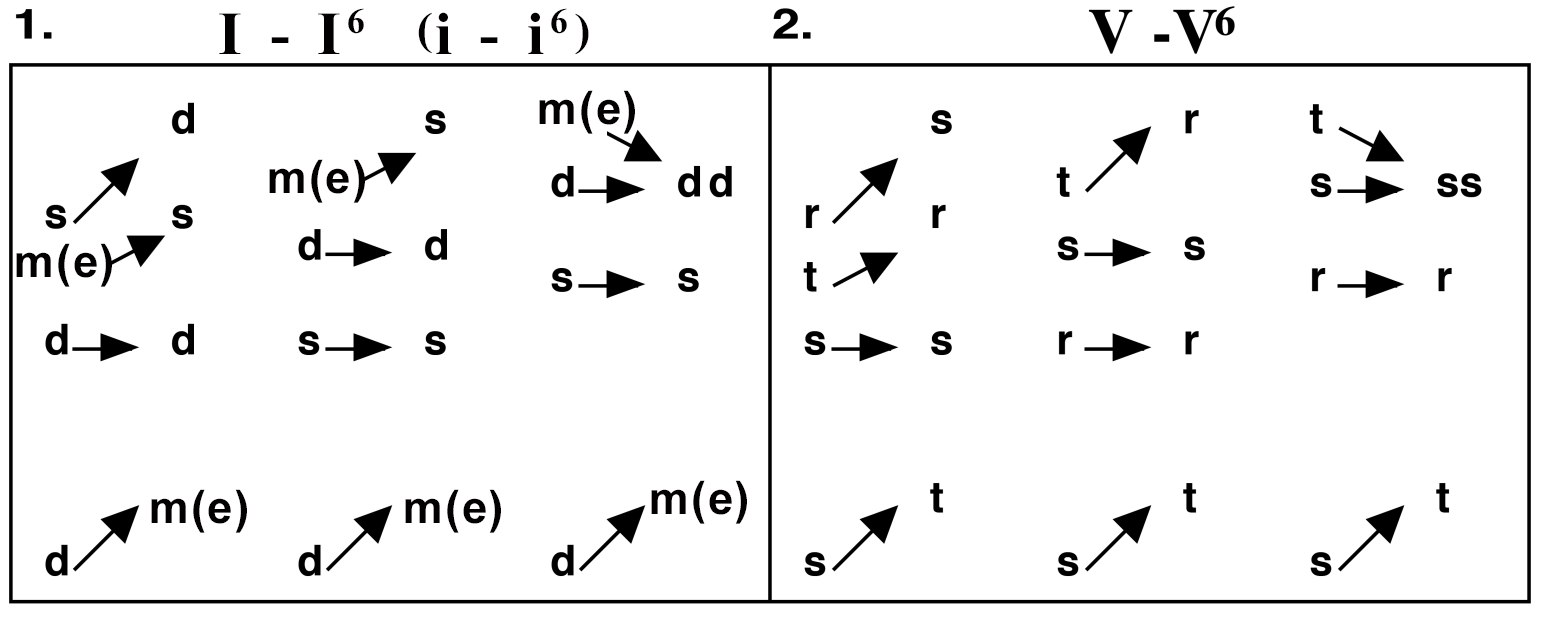
*In keyboard writing the unison doubling is not shown, resulting in what looks like a chord with only three voices. The examples throughout this book, however, show the two notes on either side of the stem.
**In choral writing, the stems of the shared notes are split.
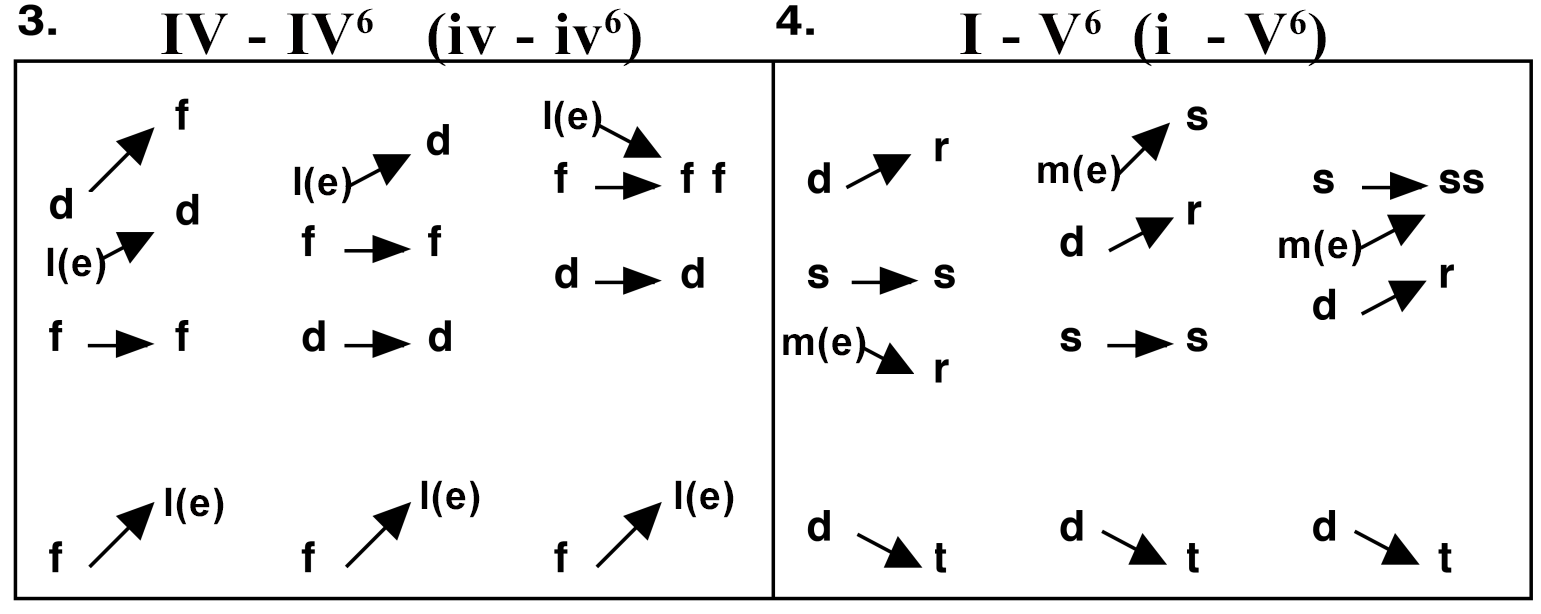
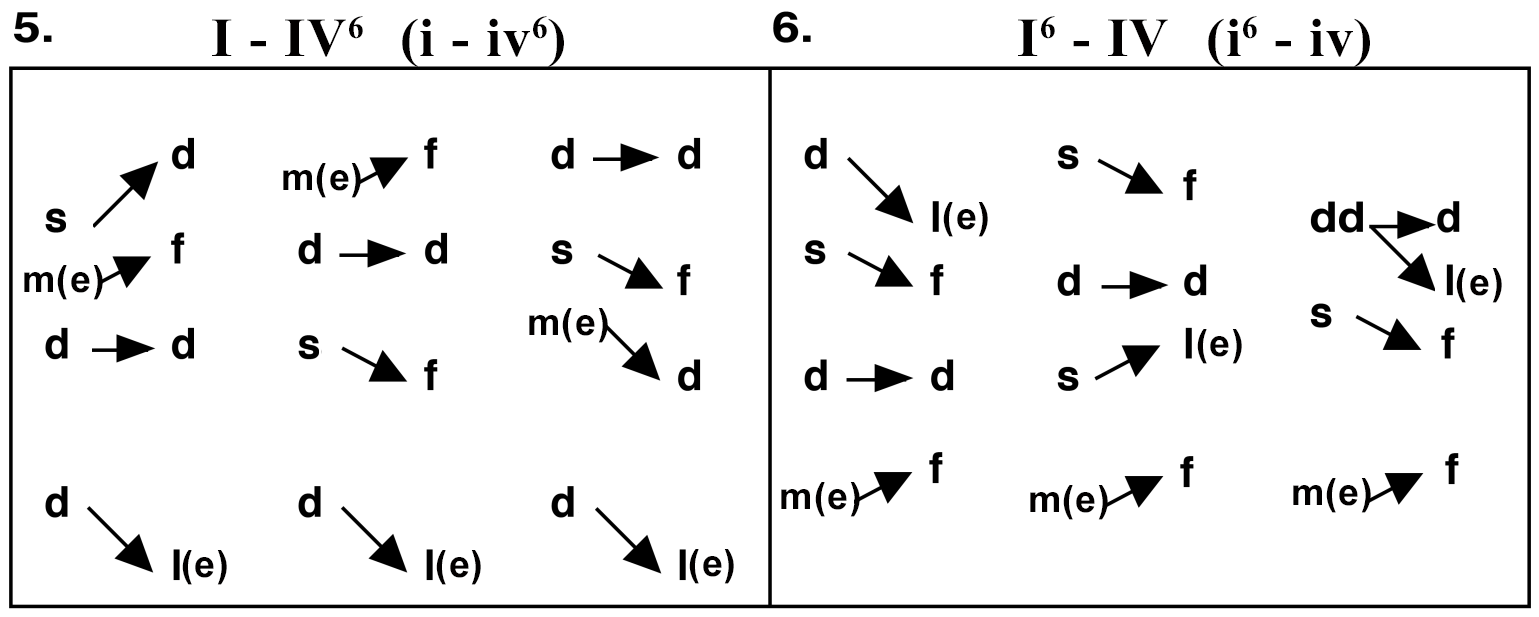
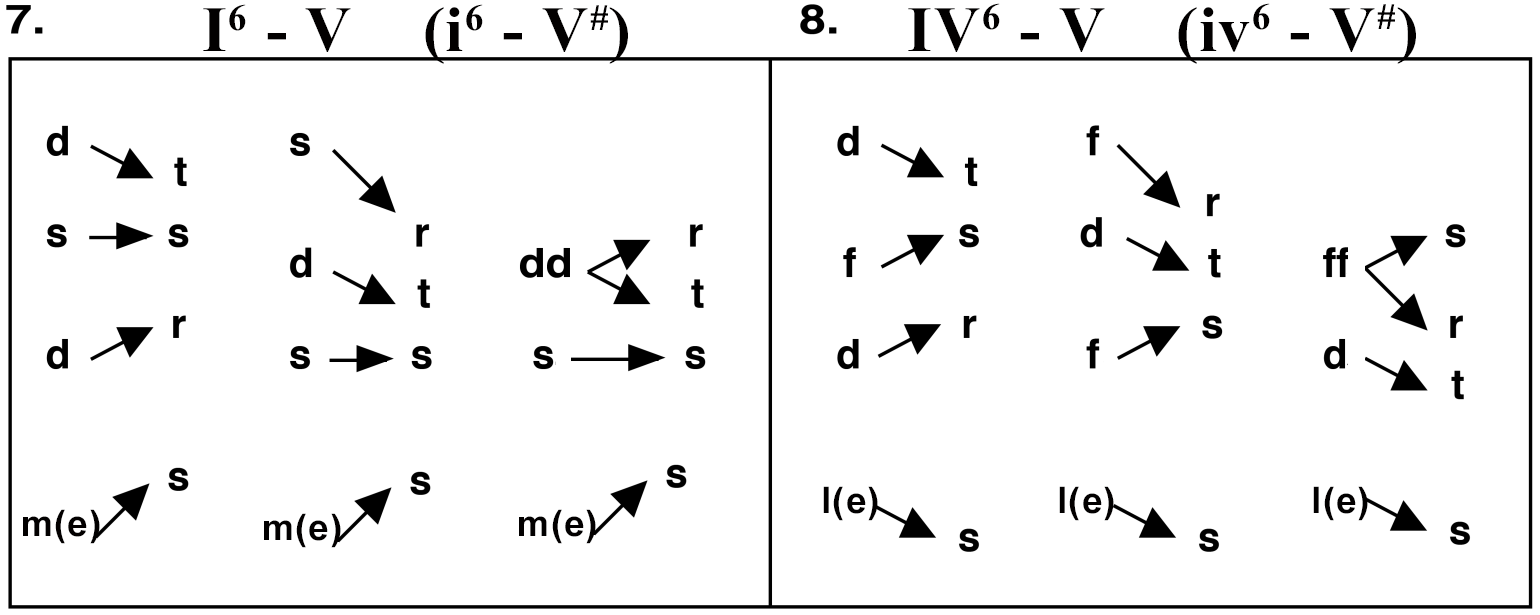
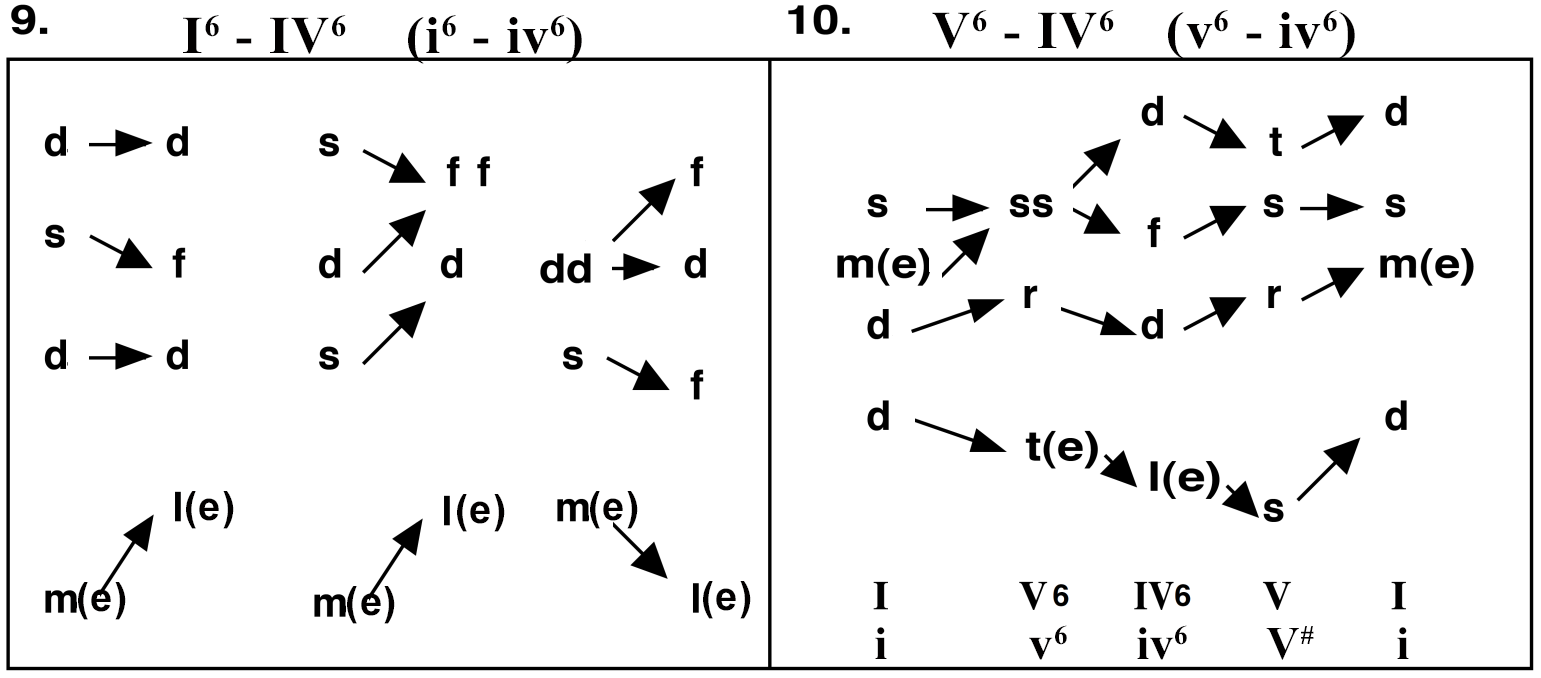
In example #10 in minor, the descending bass line do – te – le – so supports the minor v6 chord without the raised leading tone.
The IV![]() with a la soprano often functions as a passing chord between V and V6 (or vice versa) in major keys. The figured bass IV
with a la soprano often functions as a passing chord between V and V6 (or vice versa) in major keys. The figured bass IV![]() indicates the irregularly bass (the 3rd of the chord) at the octave. Note the voice exchange of ti – la – so and so – la – ti in the outer voices.
indicates the irregularly bass (the 3rd of the chord) at the octave. Note the voice exchange of ti – la – so and so – la – ti in the outer voices.
Practice
